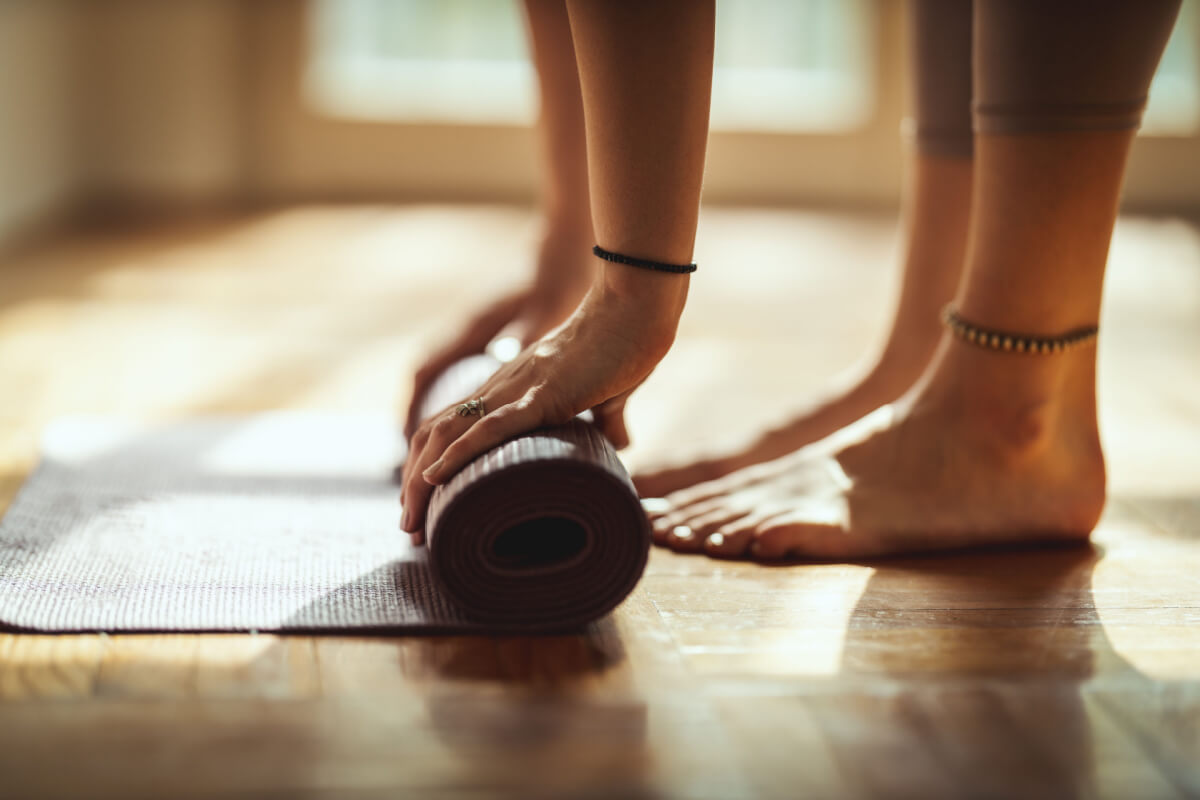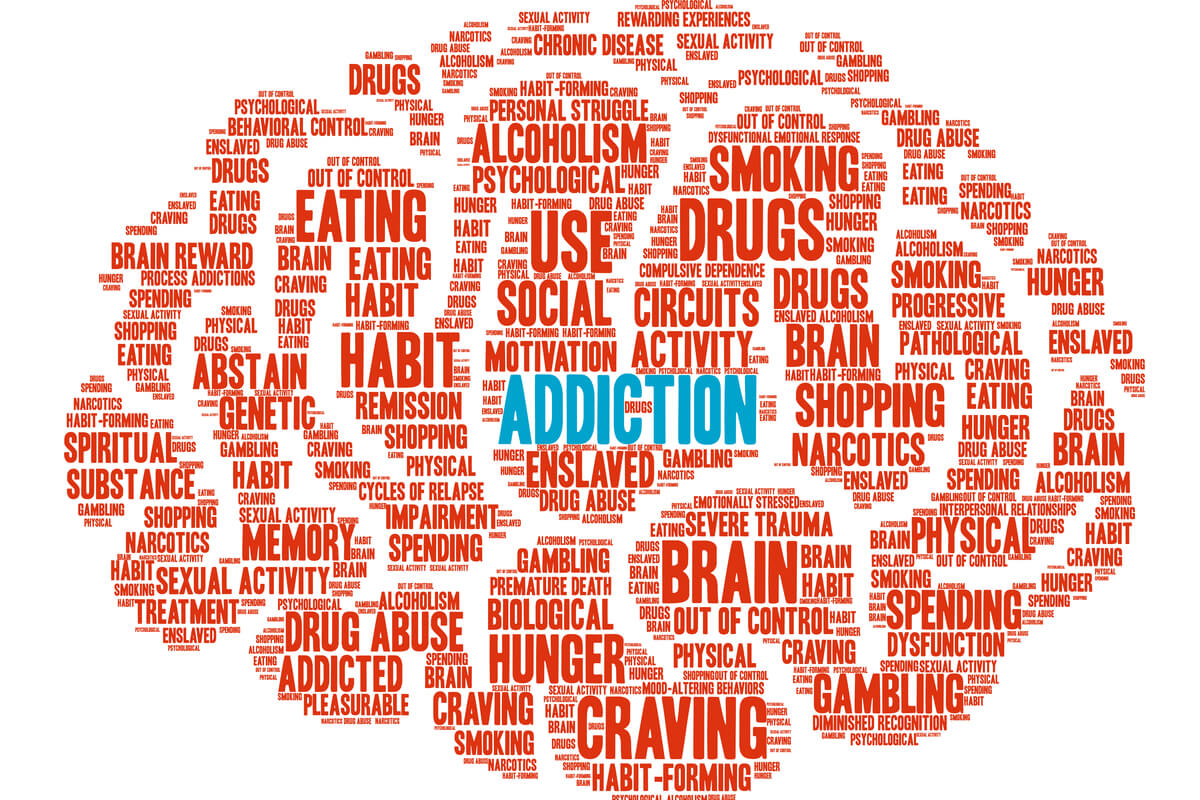
Of the many complementary holistic treatment options that have been heavily studied for potential benefits in the treatment of substance use disorder, yoga is one of very few found to be effective for this purpose.
A form of exercise and meditation that involves physical postures, breathing techniques, and relaxation practices, yoga may be helpful in the recovery from substance misuse.[1]
Some ways in which yoga may be beneficial in recovery from substance use disorder include the following:
- Reducing stress: Yoga can help to reduce stress by promoting relaxation and calming the mind. This can be particularly helpful in recovery, as stress can be a major trigger for substance misuse.
- Improving physical health: Yoga can improve physical health by increasing flexibility, strength, and balance. This can be beneficial in recovery, as substance misuse can have a negative impact on physical health.
- Increasing mindfulness: Yoga can increase mindfulness, which is the practice of being present in the moment and paying attention to one’s thoughts and feelings without judgment. This can be beneficial in recovery, as it can help people to better manage cravings and triggers for substance misuse.
- Increasing social support: Yoga can be practiced in a group setting, which can provide a sense of social support and connection.
It is important to note that yoga should not be used as a standalone treatment for substance use disorder. Instead, it should be used in conjunction with other forms of treatment, such as counseling and medication, to provide a comprehensive approach to recovery. Yoga can be a great way to increase the number of coping mechanisms available to avoid relapse.
How Is Yoga Used in Recovery?
Yoga is often one of many alternative tools used in the treatment setting to augment traditional talk therapy and medication. It may be offered to the entire group or as a part of an individual treatment plan in a few different ways, including these:
- Yoga classes: Yoga classes with a group of people who are also in recovery may be offered within the treatment program. There are also yoga classes that are created specifically with a focus of healing from substance use disorder and offered at yoga studios.
- Yoga at home: Individuals in recovery can also practice yoga at home by following along with online yoga classes or using yoga DVDs. These provide practitioners in recovery with the opportunity to explore different styles of yoga to find the ones that most resonate with them.
- Yoga in group therapy: Yoga can be incorporated into group therapy sessions as a way to promote relaxation and mindfulness or as a way to deliver guided meditations that can lay the groundwork for insightful conversation.[2]
- Yoga in individual therapy: Yoga can also be used in individual therapy sessions as a way to explore and process thoughts and emotions related to recovery.
How Does Yoga Help Recovery?
Yoga offers a number of benefits to people in treatment, both those who are early in recovery and those who are years into their new life without substances. Some of the benefits include the following:
Unity
The sense of belonging created among yoga practitioners can be a huge benefit for people in recovery who are looking for personal connection. The social support that comes from routinely attending yoga classes with others in a group setting can be hugely beneficial, offering another layer of connection.
Coping Mechanism
Yoga can reduce stress by promoting relaxation and calming the mind. This can be particularly helpful for individuals in recovery, as stress can be a major trigger for substance misuse. When feeling anxious, panicked, depressed, or uncomfortable, people who practice yoga can turn to their practice for support rather than substances.[3]
Transition Support
It is important to learn how to live in the moment in recovery to avoid feeling guilty about the past or overwhelmed by the future. Yoga assists in this process by teaching mindfulness, helping practitioners to better live in the moment.
Spiritual Growth
Yoga is not just about creating shapes with your body on a mat. Connection to something larger than oneself is the focus of the practice. This sense of uplift and spiritual connection can be hugely beneficial to those seeking something greater than themselves to focus on.
Physical Benefits of Yoga for Recovery
The physical benefits of yoga practice are often the reason why people first seek out yoga classes. There are a number of positive benefits to regular practice, including these:
- Improved flexibility: Yoga can increase flexibility by stretching and lengthening the muscles. This can be beneficial for individuals in recovery, as it can improve range of motion, prevent injury, and decrease feelings of tightness and pain that may trigger relapse.
- Increased strength: Yoga can increase strength by using the body’s own weight as resistance. This can be beneficial for people in recovery, as it can increase muscle tone and overall fitness over time.
- Better balance: Yoga can improve balance by strengthening the muscles that support the body’s core, strengthening the feet, and increasing body awareness. This can be beneficial in recovery and beyond, as it can boost coordination and prevent falls.
- Reduced inflammation in the body: Yoga can reduce stress by promoting relaxation and calming the mind. Compared to non-yoga practitioners, people who regularly perform yoga show lowers levels of stress hormones like cortisol and cytokine levels that can contribute to inflammation in the body.[4] Because drugs and alcohol are toxins, they create a great deal of inflammation in the body, making yoga a great tool for repair.
- Improved sleep: Yoga can aid in the ability to fall asleep and stay asleep by relaxing the mind and body and promoting relaxation. This can be beneficial for individuals in recovery, as good sleep can improve overall physical and mental well-being. In addition, struggles with insomnia can be a trigger for relapse.
Mental Benefits of Yoga for Recovery
Mental health is a big focus in recovery and learning how to manage symptoms so that they are no longer a trigger relapse is a primary focus. Yoga provides another tool in that process by offering mental health benefits like:
- Stress reduction: Breathing techniques and turning one’s focus inward can help to trigger the parasympathetic system, slowing heart rate, slowing breath, and lowering body temperature. All this can help to feel calmer in the moment.
- Increased mindfulness: Simply sitting with one’s own thoughts and feelings is a key ability to develop for long-term recovery, and yoga provides this training. The key is not to judge any thoughts or feelings, but to simply acknowledge them.
- Improved mood: Yoga can enhance mood by releasing endorphins, which are chemicals that act as natural mood elevators. This can be beneficial for people in recovery who are dealing with the ups and downs of transitioning into a new life as well as those who may be struggling with co-occurring depression or anxiety disorder.
- Enhanced self-awareness: Yoga can increase self-awareness by promoting body and breath awareness. This can be helpful in recovery as it supports better understanding of personal thoughts, feelings, and behaviors and to identify patterns that may contribute to substance misuse.
- Relaxation: Some forms of yoga include the use of bolsters, eye pillows, soft music, and aromatherapy, which promotes relaxation by calming the mind and reducing stress. This respite can provide a nice escape for those who are used to turning to substances in order to feel good or to relax.
The Natural High From Yoga
Some people may experience a sense of well-being or a “natural high” after practicing yoga. This may be due in part to the release of endorphins, which are chemicals that act as natural painkillers and mood elevators.
There isn’t just one single way that yoga triggers this endorphin release and natural high. It’s a combination of effects of the following aspects of yoga:
- Physical activity: Stretching, bending, holding postures, and balancing can stimulate the release of endorphins.
- Breathing techniques: Controlling the breath by shortening or lengthening exhalations or inhalations as well as pausing at the top and bottom of breaths for varying periods of time can influence how one feels physically and emotionally.
- Relaxation: Meditation and visualization are a big part of yoga practice, and they can help to reduce stress and improve mood.
- Triggering of the endocannabinoid system: The combination of physical activity, controlled breathing, and relaxation may trigger the endocannabinoid system in the body, which can act as a natural painkiller and mood elevator.[5]
- Better mood stabilization: The release of endorphins and the relaxation that is associated with yoga can improve mood and contribute to a feeling of wellness or the natural high that comes from yoga practice.
Yoga for Addiction Recovery Statistics
Research supports the use of yoga in recovery.
- Higher gray matter and activity in the areas of the brain that help control stress were found in yoga practitioners doing 70% asana or physical postures, 20% meditation, and 10% pranayama or breath work, compared to people not regularly doing yoga, according to the Scientific American.[6]
- A study published in the journal Complementary Therapies in Medicine found that in a group of people trying to cut down on their use of alcohol by using traditional treatment methods plus yoga, they were able to cut their drinking from 6.32 drinks per day down to 3.36 drinks per day.[7]
- Harvard Health reports that when a group of people struggling with mental health issues (a common co-occurring issue for people in addiction recovery) practiced yoga for 1.5 hours two times a week for three months, about 50% of the participants experienced less depression, about 33% had decreased anxiety symptoms, and 65% said that they had improved overall well-being.[8]
Overall, while more research is needed to fully understand the role of yoga in addiction treatment and recovery, and its efficacy among different population groups addressing different issues in recovery, these studies suggest that yoga may be a helpful adjunctive treatment for individuals in recovery from substance misuse and substance use disorder.

Reviewed By Peter Manza, PhD
Peter Manza, PhD received his BA in Psychology and Biology from the University of Rochester and his PhD in Integrative Neuroscience at Stony Brook University. He is currently working as a research scientist in Washington, DC. His research focuses on the role ... Read More
- Yoga as an Adjunct for Treatment of Substance Abuse. Practice Innovations. https://psycnet.apa.org/doiLanding?doi=10.1037%2Fpri0000079. 2019. Accessed December 2022.
- Role of Yoga in Management of Substance-use Disorders: A Narrative Review. Journal of Neurosciences in Rural Practice. https://www.ncbi.nlm.nih.gov/pmc/articles/PMC5812135/. January 2018. Accessed December 2022.
- How Might Yoga Help Depression? A Neurobiological Perspective. Explore NY. https://www.ncbi.nlm.nih.gov/pmc/articles/PMC3293477/. March 2012. Accessed December 2022.
- Yoga Reduces Cytokine Levels Known to Promote Inflammation, Study Shows. Science Daily. https://www.sciencedaily.com/releases/2010/01/100111122643.htm. January 2010. Accessed December 2022.
- Feeling Blissed Out After a Yoga Session? The Reason May Lie Within the Body’s Endocannabinoid System. Everyday Health. https://www.everydayhealth.com/marijuana/feeling-blissed-out-after-a-yoga-session-the-reason-may-lie-within-the-bodys-endocannabinoid-system/. January 2020. Accessed December 2022.
- How Yoga Changes the Brain. Scientific American. https://www.scientificamerican.com/article/how-yoga-changes-the-brain/. March 2014. Accessed December 2022.
- Yoga as an Adjunct Treatment for Alcohol Dependence: A Pilot Study. Complementary Therapies in Medicine. https://www.sciencedirect.com/science/article/abs/pii/S096522991400034X. June 2014. Accessed December 2022.
- Yoga for Better Mental Health. Harvard Health Publishing. https://www.health.harvard.edu/staying-healthy/yoga-for-better-mental-health. June 2021. Accessed December 2022.
Download Our Free Program Guide
Learn about our program, its effectiveness and what to expect
Related articles
Imagine what’s possible on the other side of opioid use disorder.
Our science-backed approach boasts 95% of patients reporting no withdrawal symptoms at 7 days. We can help you achieve easier days and a happier future.









